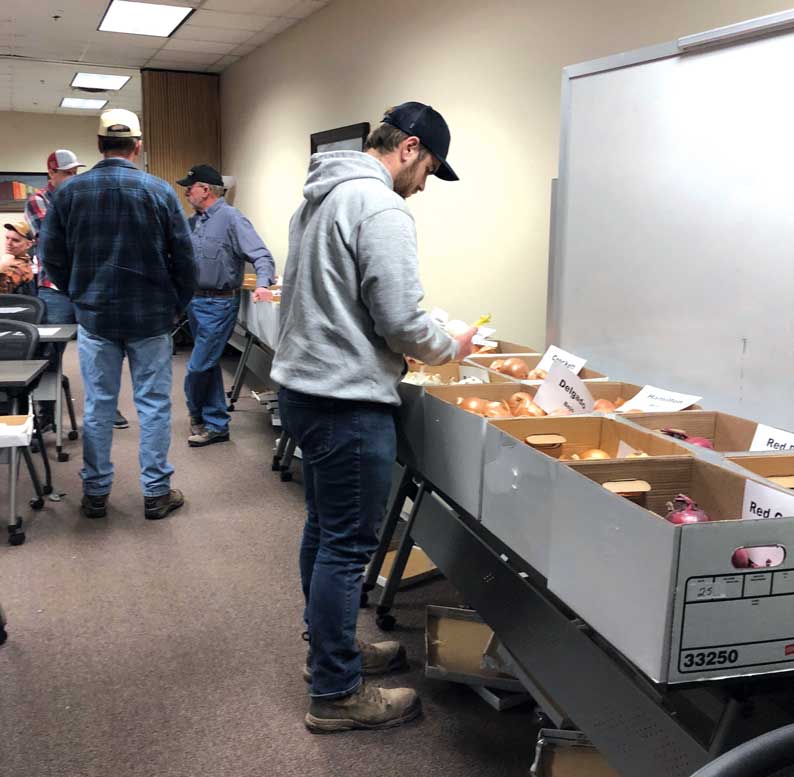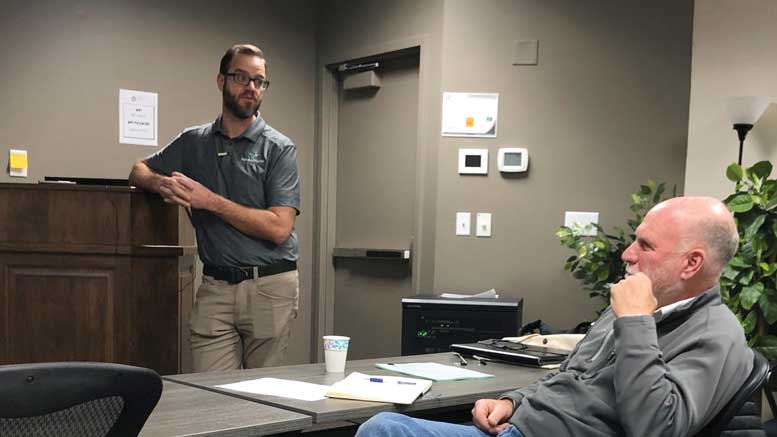|
Click to listen to this article
|
Story and photos by Dan Drost and Claudia Nischwitz, Utah State University
Onion crop health and farmer mental health were featured topics covered during the 2023 Utah Onion Association winter meeting held Feb. 7.
In welcoming attendees, Dan Drost with Utah State University (USU) thanked them for supporting the Utah onion industry for the past 31 years.
“I attended my first Utah Onion Association meeting in February 1992. Shawn Olsen and James Barnhill organized that meeting, and it was my first USU Extension event after arriving in Utah in January 1992,” Drost said. “The Utah onion industry was searching for answers to common problems then, and for the industry to remain productive, a strong healthy onion association is needed now.”
Stop the Rot
Lindsey du Toit, a Washington State University plant pathologist, was the 2023 keynote speaker and shared an overview of the “Stop the Rot” program. Bacterial diseases occur throughout onion production regions in the U.S. They are hard to detect, poorly understood, have complex associations with onions and limited control options, and there are few resistant cultivars. Researchers from across the U.S. have been busy collecting and identifying bacterial pathogens found in onion production regions and evaluating bacterial disease management strategies to help minimize potential outbreaks.
“There is a wide diversity of bacteria found in onion fields, but most are not onion pathogens,” du Toit said.
She went on to characterize some studies conducted to identify crop management practices that may minimize bacterial infections. These include variety screening for tolerance to bacterial infections and how irrigation frequency, timing and application methods influence bacterial bulb rots. Of particular interest to the group was the information on the reduction in bacterial rot when chain diggers were used compared to straight blade undercutters.
“We’ve learned a lot about the extent and diversity of bacterial diseases through the studies conducted,” du Toit said. “Now we have to put those into practice.”
For more information on the Stop the Rot project, visit www.alliumnet.com.
Fusarium Bulb Rot
Claudia Nischwitz, a Utah State University plant pathologist, shared additional details on the Fusarium bulb rot problem showing up in the state. The disease is caused by Fusarium proliferatum and while outbreaks are rare, “the disease can resemble Botrytis neck rot” and can be hard to detect. A noticeable difference between the two diseases is that with Fusarium, fungal mycelium can frequently be seen growing between the scales in the bulb, according to Nischwitz.
Due to the infrequency of occurrence, little is known about the pathogen and the disease life cycle. Nischwitz reported that higher incidence occurs when intense rainstorms occur in the two to three weeks before harvest, when necks are cut short, and when hot weather occurs after the storm. Nischwitz’s lab has started research to learn more about the pathogen, disease cycle and management strategies for growers.

Yield Monitoring
Doug Moore with HarvestMaster described how in-field yield monitoring can improve profitability and help growers better understand crop performance.
“Using reliable yield monitoring hardware that easily mounts to the harvester and a simple-to-use interface, in-field yield data is captured and displayed to help visualize crop performance,” Moore said.
He noted that while the system is not presently being used for onions, the harvest machines are similar to potato harvesters and thus, should be pretty easy to fit and adapt.
“Automated yield maps of fields are manufactured in real time, quickly accessed from the website and stored for future reference. Row-by-row performance is visualized and available when you need it,” he said.
Mental Wellness
April Litchford with USU Extension’s nutrition and wellness program shared with the audience “The Greatest Asset is You – Cultivating Mental Wellness.”
“Farmers are really stressed, and the level of stress is greater than that found in the general population,” Litchford said.
“Discussing stress and mental wellness is hard,” she said, adding that if not talked about, it can lead to depression and anxiety, which can impact how we work and interact with those around us.
To help manage stress, one needs to create healthy habits like exercise, hobbies or sleep. “First, one needs to identify what is going on and talk about it. Second, when someone needs help, you need to respond through asking the individual what is happening. Finally, help them connect to the resources available so they can deal with their issues,” Litchford said.
The Utah Onion Association plans to hold its summer onion field day in Weber County on Aug. 8.

